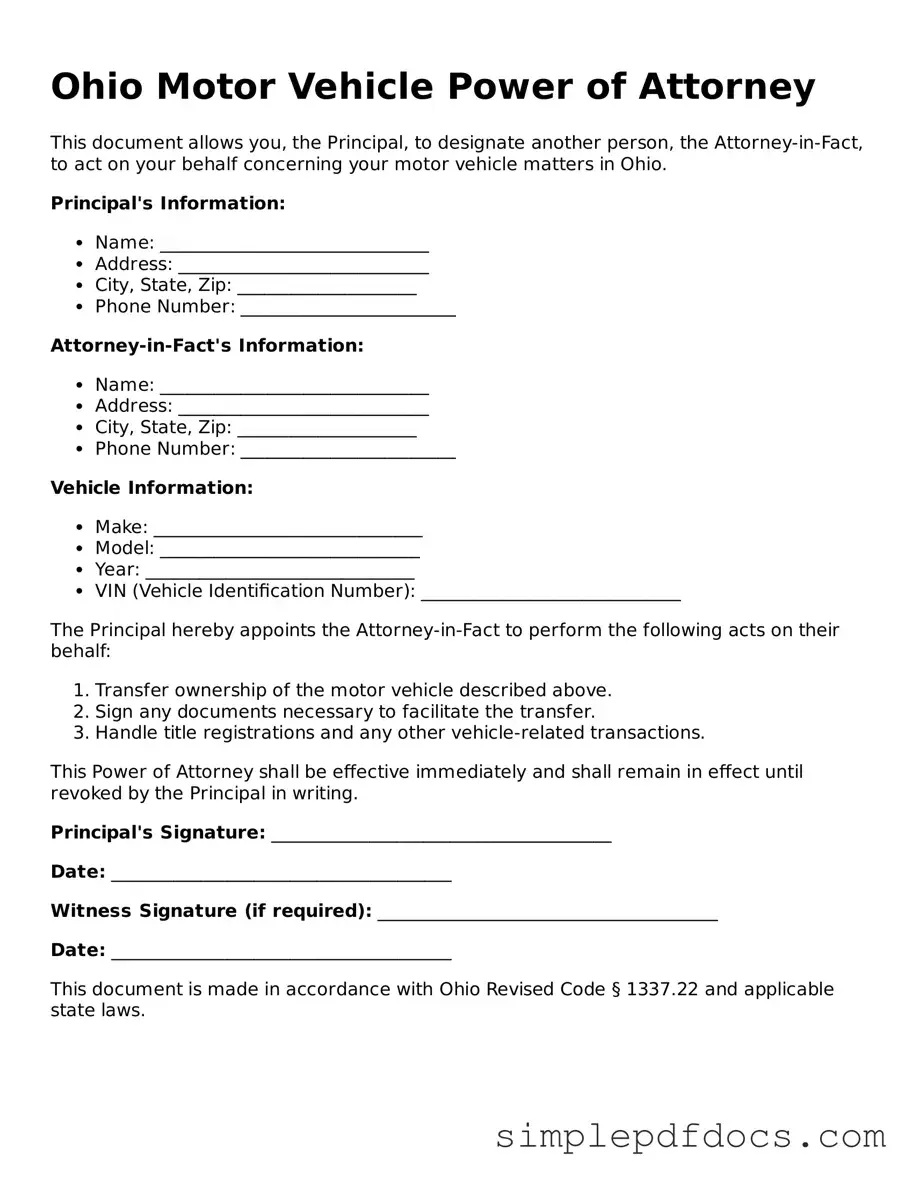Legal Motor Vehicle Power of Attorney Document for the State of Ohio
The Ohio Motor Vehicle Power of Attorney form is a legal document that allows an individual to designate another person to act on their behalf regarding motor vehicle transactions. This form is essential for those who may be unable to handle these matters personally due to various reasons, such as illness or absence. By utilizing this form, individuals can ensure their vehicle-related affairs are managed efficiently and according to their wishes.
Get Document Here
